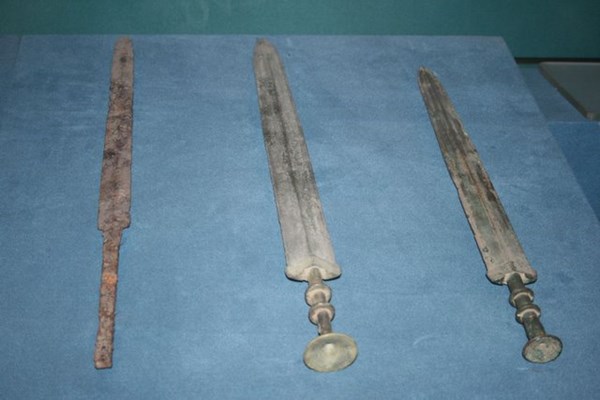Scientists Unearth Ancient Plating Techniques
Last month, a group of South Korean scientists discovered metal plating techniques that date back to over 1,400 years ago.

An iron sword and two bronze swords from the Chinese Warring States Period. (Gary Lee Todd, Ph.D., Professor of History, SIAS International University, Xinzheng, Henan, China/Wikipedia)
Plating goes back thousands of years. Last month, a group of South Korean scientists discovered metal plating techniques that date back to over 1,400 years ago. According to a story published by Yonhap News Agency (see the original story here), the scientists duplicated ancient techniques to replicate a 1,400-year-old Buddha statue discovered in South Korea in the southeastern ancient capital of Gyeongju.
Featured Content
The National Science Museum said the plating technique used corrosive acid from Japanese plums that applied a sticky, thin film of gold to statues made of materials like bronze.
"The center piece of the ancient metal plating technology is acid from Japanese plums," said Yoon Yong-hyun, museum official leading the research.
"Until now we did not know what was used in the ancient plating. However, we successfully restored the ancient plating using acid derived from the fruit," said Yoon. "It is meaningful that the statue was restored using the technique and materials from that time."

Qin dynasty sword on display. (Mark Lorch, CC BY-ND 4.0)
The Chinese Qin Shihuang dynasty is credited with sophisticated chrome plating techniques for weapons. After unearthing bronze weapons in a major excavation in 1974, scientists found that not only were the swords double-cast and heat treated, but consisted of a fine, 10-15-micron chromium oxide coating, a process reportedly not used in the West until the 1900s.
Miraculously enough, the artifacts found in China and South Korea were left impressively intact and well preserved.
RELATED CONTENT
-
Stripping of Plated Finishes
The processes, chemicals and equipment, plus control and troubleshooting.
-
Aluminum Anodizing
Types of anodizing, processes, equipment selection and tank construction.
-
Masking for Surface Finishing
Masking is employed in most any metal finishing operation where only a specifically defined area of the surface of a part must be exposed to a process. Conversely, masking may be employed on a surface where treatment is either not required or must be avoided. This article covers the many aspects of masking for metal finishing, including applications, methods and the various types of masking employed.


















